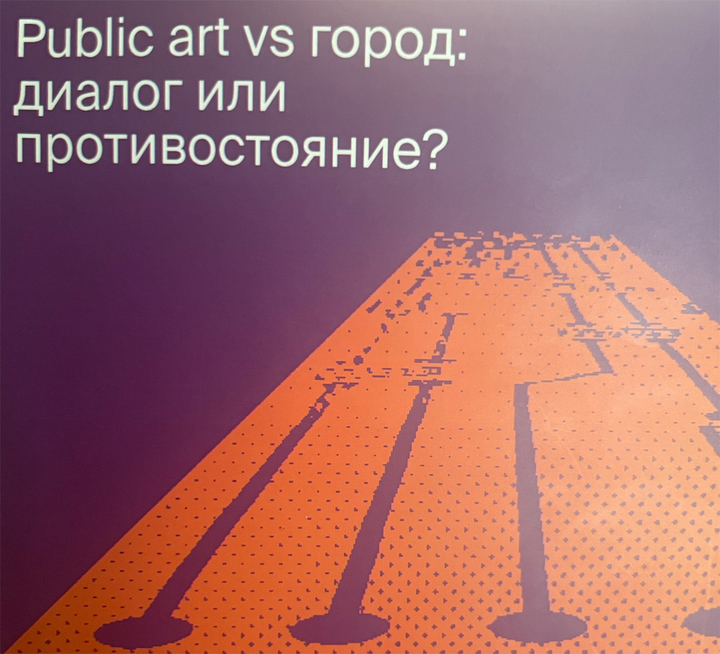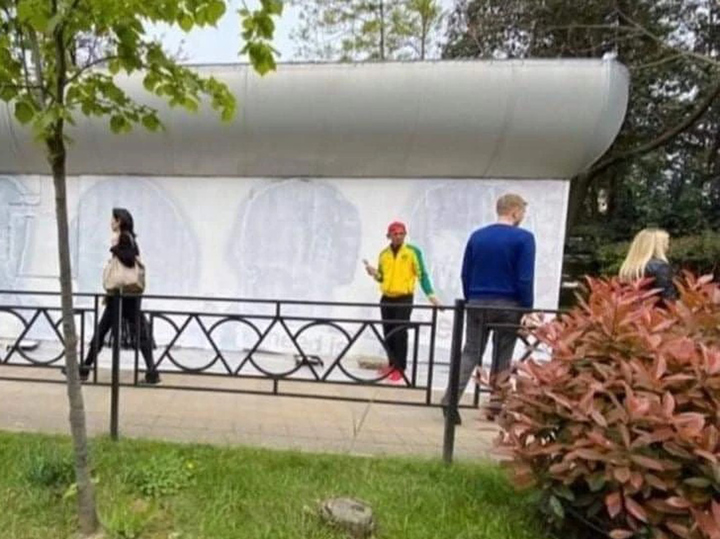Public art has reached a new level of discussion: a comprehensive publication has appeared
[ad_1]
The rise of public art is just around the corner
“Public art vs city: dialogue or confrontation” – this is the name given to the first comprehensive scientific publication dedicated to the most accessible and debatable of the arts. The first attempt to comprehend public art is based on the materials of an international conference held by the State Institute of Art History a year and a half ago. It was attended by 20 specialists – artists, organizers of street festivals, art historians. A collection of selected articles has been prepared and has just now been published. And during this time, “exposure” has become even more relevant. Public art needs time to grow into the urban environment. Experts are sure that the heyday of public art will come in five years, but today it is in a dangerous zone.
Three years ago, the Encyclopedia of Russian Street Art was published, which took even longer to prepare. But there was a lot of confusion in terminology, and more reference and historical material, less theoretical. The focus of the encyclopedia is street art, one of the areas of public art. Public art, however, is wider than murals and graffiti. The work, which has just been published by the main art history institute of the country (under the editorship of Inna Pulikova, a researcher at the GII), is the first attempt to substantiate the theory and comprehend the practice of art in public space, one of the youngest in the history of Russian culture.

In the West, public art appeared in the 1960s, and in Russia it began to develop only in the last 20 years. Another thing is street art. Murals and graffiti have already become familiar to Russian cities and are more and more of an advertising nature than a conceptual one. According to one of the leaders of public art in Russia and the author of one of the articles in the collection, artist Marina Zvyagintseva, street art has experienced its heyday, while a broader direction – the art of public spaces – is just waiting for it. What is the difference between street and public art?
The edge is quite thin. Public art is more than a picture on the wall, more often it is an installation, a multi-part and multi-meaning work that grows into the fabric of the environment and is not necessarily located in the open. Hospital, school, shopping center, factory – any social territory can be a place of “growing in”. An important aspect is the site-specificity of public art; in terms of content and ideas, it is always connected with the place for which it is created.
Take, for example, the installation “Happiness is not far off” by Boris Matrosov. She has been living on the Kama embankment in Perm since 2009 and during this time has become a symbol of the city. The beauty (and difference from the same murals) is that the installation is constantly changing due to interaction with the place. At sunset, red letters convey one mood to the viewer, and another at sunrise. The phrase either turns out to be partially covered by water, or emerges from the waters of the Kama. The river adds subtexts and meanings to Matrosov’s work. “Happiness is not far off” is replicated on postcards, published in books, forgetting about royalties from artists. Here emerges another aspect of public art – lawmaking. Evgenia Dudkina in her article analyzes this issue using the example of “Happiness”. From 2016 to 2018, Matrosov sued for placing a sign with his authorship next to the installation, and won a series of proceedings. However, in the fall of 2021, the work was dismantled in order to reconstruct the embankment, promising to return it to its place in December 2022. But while “Happiness” has not returned to Perm.

Law is part of practice and theory when it comes to public art. It is the most censored. Without the permission of the city authorities (usually several levels of approval), not a single object will stand idle longer than a day. In this sense, murals, which are often rapidly and illegally appearing on the walls, differ from installation works, which cannot be built quickly. In our pointed time, many street art works have disappeared – the famous wall in Sochi has been painted over with gray, many works by the Yav group have disappeared in St. Petersburg. This is because the image of The Beatles (Sochi), which did not revolt anyone for many years, was now interpreted as an imposition of Western culture. And the inscription “Goolag” in St. Petersburg evoked associations with political purges, although at other times it could be understood as a stone in the garden of a Western information search engine. Art is art because its meaning is not literal and exists on several planes at once.
“Public art is always in the danger zone,” says Marina Zvyagintseva, “it has always been subject to censorship, only now its scope is more clearly defined. It is clear that if you want your work to remain, then you need to be careful not to hurt the feelings of believers or the topic of non-traditional values in some way. For a real artist, all these topics are momentary, the depth of the work is tested by time, and it remains if it turns out to be wider than the acute issues of today’s agenda. However, the Western discourse is now gone. There is a self-identification of Russian art. And public art is always tied to a place – so artists have a chance to find the cultural code of the point in which they create their work. The city has always had a hard time accepting public art, but public art does not conflict with it, but creates a dialogue, brings emotions into public space.
An attempt to comprehend the laws of public art from a scientific point of view is a small but sure step towards understanding the structure of a territory that is comfortable for people. Today, many projects are “on pause” – largely due to economic reasons. But the art process launched 20 years ago in Russia cannot be stopped. Public art is not decoration, not decoration, but the self-identification of social space, the creation of a specific atmosphere, public relations. As Inna Pulikova writes in the title article of a scientific publication, the request for dialogue cannot be ignored: confrontation turns into interaction. The designation of this trend is an important reference point announced by the art community at the dawn of 2023.
[ad_2]
Source link






